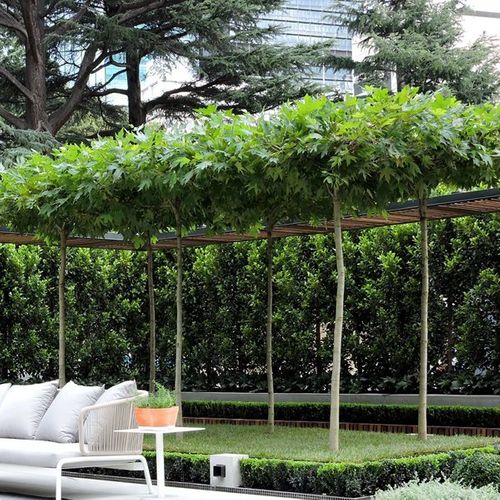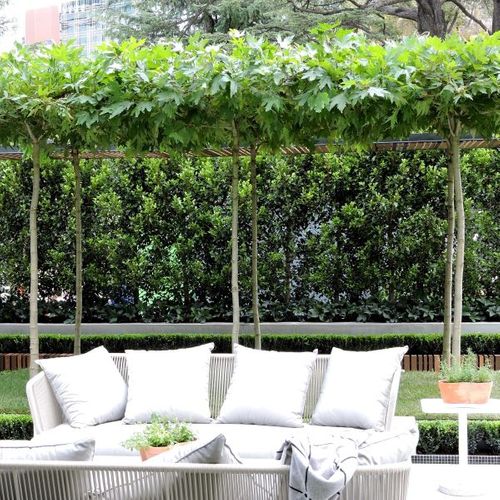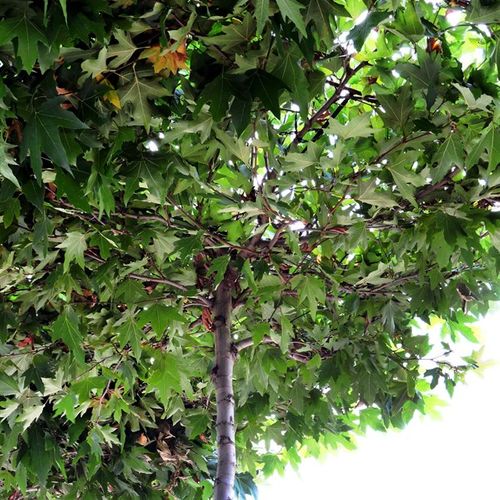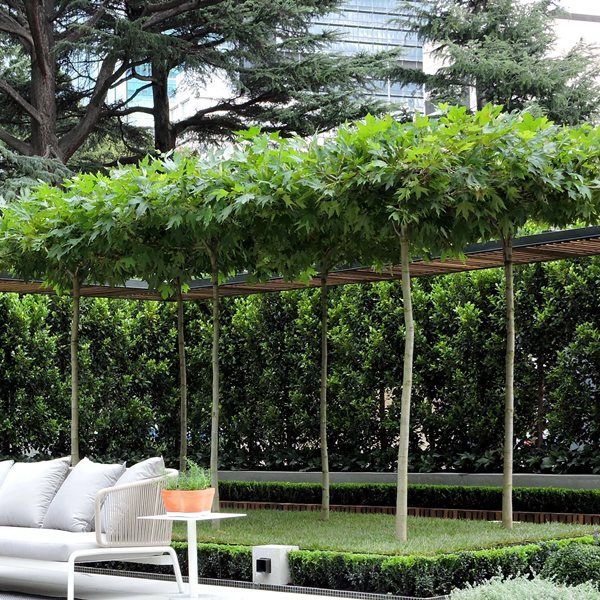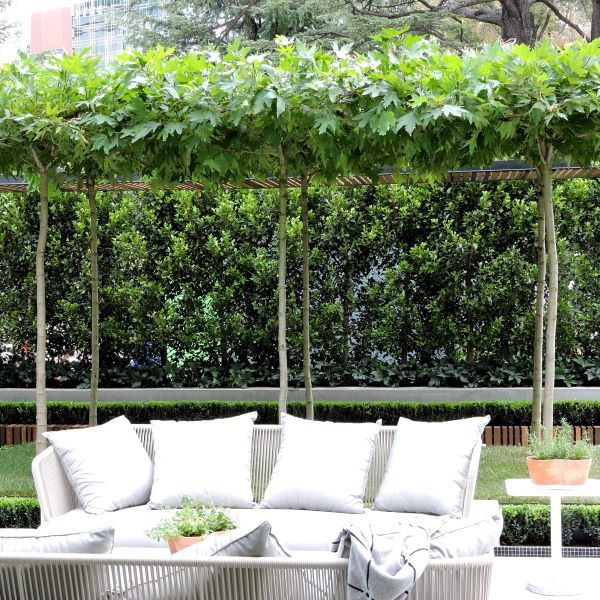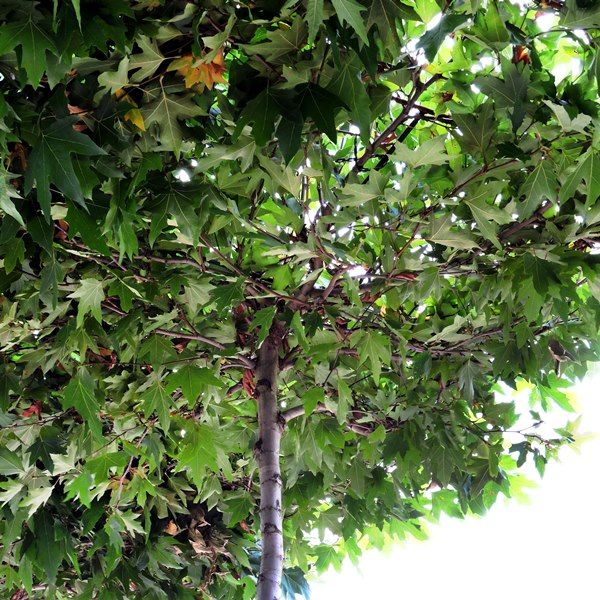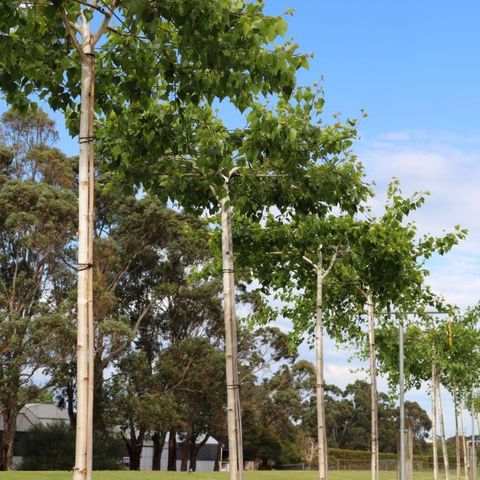Platanus x acerifolia Living Pergola
A living pergola uses trees to form a natural, shaded structure instead of using traditional wooden beams or metal frameworks. These trees are strategically planted and trained to form a canopy that mimics the appearance of a pergola, creating a serene, leafy retreat in a garden or outdoor space. London Planes most striking features is its mottled, peeling bark. The bark sheds in patches, revealing a patchwork of colours ranging from creamy white to pale green, grey, and brown. The leaves are large, palmately lobed, and resemble maple leaves. They are a vibrant green during the growing season and can turn golden yellow to brown in autumn.
Cultural
Once the plants have fully developed into the pergola structure the supportive, wire frame can be removed. Platanus produce fine hairs on its leaves and fruit that can cause irritation or trigger hay fever and respiratory issues, particularly in spring. For information on Living Pergola Maitenance CLICK HERE
Soil:
Can tolerate any soil, suitable for poor or compacted soil.
Aspect:
Full sun to part shade.
Maintenance:
Fruit can be a hazard on the ground, remove as it falls. For information on Living Pergola Maitenance CLICK HERE
Water Requirements:
Drought tolerant once established. Will benefit from occasional, deep watering during extended dry periods.
Seasonal Interest:
Autumn foliage colour, winter fruiting.
Landscape Uses
Living pergolas create cool, shaded spaces perfect for outdoor seating, dining, or relaxation. Their natural canopy provides a tranquil escape from the sun while seamlessly blending with garden landscapes. They serve as natural privacy screens, shielding outdoor areas from neighbours or busy streets while maintaining an open, airy feel. Additionally, living pergolas can line walkways, forming beautiful green tunnels that enhance the aesthetics of gardens, parks, or private properties. By replacing artificial shading structures with natural growth, they support sustainability, enhance biodiversity, and reduce environmental impact.
Dimensions
Height 2.5m
Frame 1.2 x 1.5m
Frame 1.2 x 1.5m

